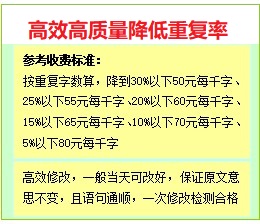etition between traditional destinations seeking to maintain and expand their market share and new destinations that are trying to acquire a significant and growing market share. The success of tourist destinations thus depends on their regional tourist competitiveness in terms of the attractiveness characteristics (or quality profile) that make up the tourist strength of a certain area.
In the tourist field competition among territorial areas is usually not centred on the single aspects of the tourist product (environmental resources, transportation, tourism services, hospitality, etc.), but on the tourist destination as an integrated and compound set of tourist facilities for the consumers. (Dwyer & Kim, 2003) Therefore, the destinations have to face the challenge to make use of their resources efficiently in order to supply a holiday experience that must outperform alternative destination experiences on the tourist market. Consequently, in the recent literature the analysis and measurement of tourist destination competitiveness have attracted increasing interest. (Buhalis, 2000)
According to Richards and Binink (1995), and in line with European Association for Tourism and Leisure Education (ATLAS), Cultural tourism is defined as the movement of persons to cultural attractions away from their normal place of residence with the intention to gather new information and experiences to satisfy their cultural needs. (Faulkner, 1997)
Cultural tourism is the highlight of the tourism industry in recent years. With the developing of economy in china, the quality of people’s material life has raise a lot. So People‘s growing spiritual needs and demand for cultural products provide a huge market for cultural tourism. (Jiang & Zhang, 2007) China’s long history and profound culture attracts many local and foreign tourists, which promotes china’s economic development. Also, it promotes the development of related industries. The developing of cultural tourism has included in the planning report of the government in many provinces and cities. Some provinces and even regards it as regional pillar industry. (Zhang, Wei, & Liu, 2005)
3. Anren’s cultural tourism competitiveness
3.1 The development of Anren Ancient Town
Anren Ancient Town is named according to the meaning of “finding peace (an) in humanity (ren)”. It originated in Tang Dynasty. The existing old buildings were mostly built in the end of Qing Dynasty or at the beginning of the Republic of China. Among the buildings, many of them were built during the time that Liu Family had great prosperity in the Republic of China, and their style combines Chinese and Western characteristics. Solemn, elegant and decent courtyards of various kinds create special architectural scene of Anren Town, which earned the title of “Quality architectural culture product in Western Sichuan”. For the development of the culture of Anren, there is a very important person-Liu Wencai:
(1) In the early years of the Republic of China, the Liu’s had become prestigious and therefore had pushed the construction of Anren Town to a climax. From 1923 to 1942, 27 mansions had been built, and the Liu Mansion occupied over 69000m2.
(2) By 1994, Liu Wencai had funded to build Wencai Middle School, the biggest construction project in Anren at that time.
(3) By that time, the town had over 700 shops and over 2000 meters long streets in total. The 5-to-8-meter width of the streets provides residents favorite transportation and living conditions. The magnificent mansions and theaters, and the delicate two stories western-style buildings have added on the overall beauty of the town.
(4) Around the town, there scattered many other sight spots including temples.
3.2 The most competitive specialties and features of Anren
Anren is a town which is full of the senses of culture, it is the most competitive specialties and features of Anren.
3.2.1 Jianchuan Museum cluster, the largest non-government museum cluster in China
On August 15, 2005 (the 60th anniversary of victory of the Anti-Japanese War in China), the largest-scale non-government museum that jointly built by Dayi County and private collector Fan Jianchuan—Jianchuan Museum Cluster was open to tourists the first time. The museums cover an area of 500 mu, with 15 thousand square meter construction area. At present, the total amount of museums being opened and under construction is 25, 3 theme plazas, more than 10 million precious relics. It is the non-government museum with the largest construction scale and richest collections.
3.2.2 Century-old natural museum
Century-old building remains 27 century-old mansions that are designed by foreign designers and are with China and Western styles remain today; The mansions buildings of Liu family being the principle, with historical streets of Anren Ancient Town, the distributed 27 mansions of soldiers, senators and rural gentry, and beautiful rural scenery consist cultural area of the ancient town, which is a modern mansion cultural area with largest scale, best preserve and richest cultural connotation. The whole construction cluster dated back to the late nineteenth to middle twentieth. It reflects the revolution of rural construction style at different times in this century. Meanwhile, the century-old life style also exists, which presents the life style of wealthy and influential clan in mansions of Liu family. The two Liu and other influential men in recent times, and “18th regiment, 9th brigade 3rd army corp” are also influential.
3.2.3 Base of films of the Republic of China
Relying on the mansions and the museums, there derivates film school. Therefore, there is good foundation to become a base for films of subjects of the Republic of China.
3.4 The most important competitors-Wuzhen and Tongli
tourism destination competitiveness of the ancient town Anren(二)由毕业论文网(www.huoyuandh.com)会员上传。


